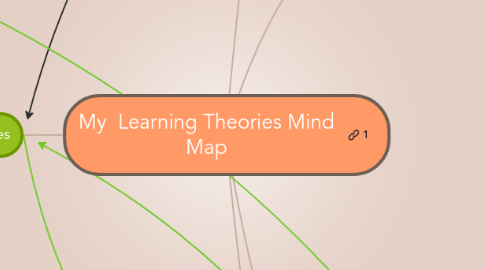
1. Technology Theories
1.1. Social Construction of Technology (SCOT)
1.1.1. Principles and Implications
1.1.1.1. Human action shapes technology
1.1.1.2. Used as a methodology to analyze cause of technological success and failure
1.1.1.3. Interpretive Flexibility: Many groups, cultures and peoples use technology, each technology has different meanings and interpretations to different people
1.1.1.4. Relevant Social Groups: core relevant groups are users and producers of technology, there is also subgroups (users with different social economic status for example)
1.1.1.5. Design Flexibility: many ways to construct and design technology, depending on interpretation of group
1.1.1.6. Different Problems and Conflicts: different groups in different societies construct different problems which lead to different technology designs
1.1.1.7. Closure: technology is continually developing and interpretations and designs for technology collapse.
1.1.1.7.1. Redefinition of the problem: a problem that makes a technology obsolete is easily fixed. Create a new problem for the original design to retain the technology's relevancy
1.1.1.7.2. Rhetorical Closure: When social groups see that problems are being solved by a particular technology, the need for new designs deminshes
1.2. Media Ecology
1.2.1. Principles and Implications
1.2.1.1. Study of media environments, or media as environments
1.2.1.1.1. Internet
1.2.1.1.2. Auditory and visual texts
1.2.1.1.3. Television and communication tools
1.2.1.1.4. Symbol systems, written language
1.2.1.2. Things that play a role in human affairs
1.2.1.2.1. technology
1.2.1.2.2. modes of information
1.2.1.2.3. codes, communication
1.2.1.3. Implication: Teach students to be citizens in technological environments
2. Example: The metaphor of building a house to represent scaffolding learning. If you do not know what a house is, you will not have a schema for that information and will not be able to process the connection between "house" and "scaffolding"
3. Learning Theories
3.1. Connectivism
3.1.1. Principles and Implications
3.1.1.1. Learn by making connections and developing your own network
3.1.1.2. Geared to make use of the digital age-theory created in 2006
3.1.1.3. Current, up to date information is the key to connectivist learning
3.1.1.4. Needs to be a diversity of opinion in order for connections and learning to occur
3.1.1.5. Make connections between information nodes
3.1.1.6. As a teacher facilitate learning through connection via twitter and other sources on the internet
3.1.1.6.1. Give access to connection tools such as Twitter, Edmodo and other networking sites
3.2. Cognitive Load
3.2.1. Principles and Implications
3.2.1.1. Sub theory of Cognitivism
3.2.1.2. Need to find the correct amount of stimulation to engage a learner. A student may not learn as effectively if they are over or under stimulated
3.2.1.3. 3 types of Cognitive Load
3.2.1.3.1. Extrinsic
3.2.1.3.2. Intrinsic
3.2.1.3.3. Germane
3.3. Constructivism
3.3.1. Principles and Implications
3.3.1.1. Teacher encourages learning and reflection
3.3.1.2. The learner constructs their own knowledge!
3.3.1.3. Metacognition: actively monitoring your own learning experience
3.3.1.4. Teacher facilitates learning by giving students authentic tasks and complex problems they can relate to
3.3.1.4.1. Teach students basic skills while they are solving complex problems
3.3.1.5. Examples of Constructivist teaching techniques
3.3.1.5.1. Discovery Based learning
3.3.1.5.2. Project/Problem based learning
3.3.1.5.3. Collaborative learning
3.3.1.6. Vygotsky's zone of proximal development
3.3.1.6.1. Teacher plans tasks that are just a little above the level that a student is at. The student has to stretch their mind to learn and the teacher provides sufficient and enriched support so the student can build their learning
4. TPACK
4.1. Definition: A framework that shows the teacher which areas they need to be comfortable with and understand in order to encorporate technology into their classroom. These three areas overlap to create an ultimate area called TPACK (technological, pedagogical and content knowledge) where all three areas interact and give students the best scope of learning available to the 21st century learner. Note: TPACK is not achieved in classrooms everyday, but are rewarding when they happen nonetheless.
4.1.1. Pedagogical knowlege: knowledge of teaching, how you can teach, what tools you can use to help a student learn, what the best ways to help a student learn are.
4.1.2. Content Knowledge: Knowledge of the curriculum, topics, key concepts and theories that you wish to teach your students
4.1.3. Technology Knowledge: Knowledge about technology, how it works, how to work with it in the classroom, what it can do for students
4.1.4. Venn diagram usually used to illustrate the interconnections between these knowledges. Retrieved from http://tpck.org. Reproduced by permission of the publisher, © 2012 by tpack.org
4.1.5. Teachers build on this framework continually. As they are exposed to new methods, content and technology, their TPACK framework and knowledge expands
